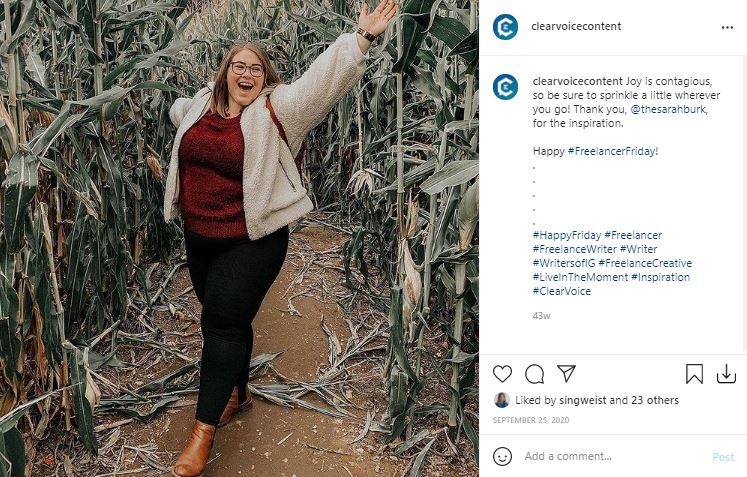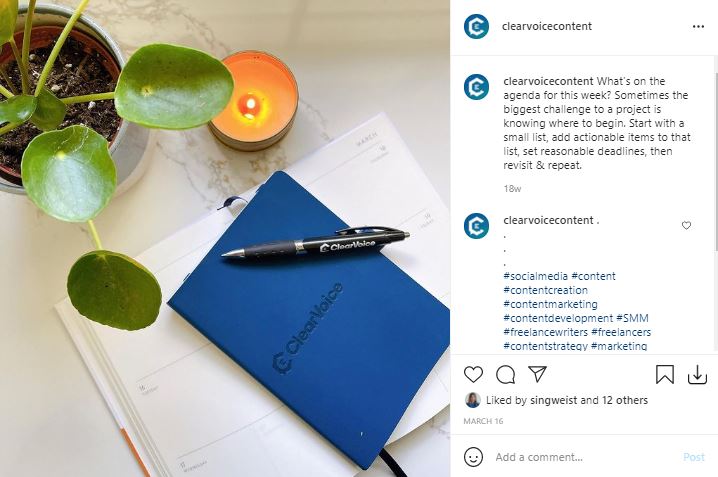If you’re following this series, you’re now aware of the fundamentals of hashtag best practices. However, with each platform, there are unique hashtag practices that either make or break your user experience and organic discovery. This includes Instagram hashtag best practices.
The one-size-fits-all approach to your hashtags is just as detrimental to content effectiveness as it is to creating content that is “matching luggage.” This term means your content is identical across all of your platforms, although your audience usage of each channel differs. Doing this with content can cost you engagement, and the repetition with hashtags can cost your content visibility.
We’ve already discussed hashtag best practices for Twitter, so let’s dive into Instagram now.
Instagram hashtag best practices
Instagram is a visual platform that allows you to connect with followers through photos, graphics, and videos. Hashtags make it easier for followers to discover your content and help you find your niche audience. Follow these Instagram hashtag best practices for better results on this popular social media channel.
Do schedule your content with well-thought-out hashtags
As a content marketer, you know that real-time posting is reactive and cumbersome. A real-time post poses more errors, and you attach yourself to the content rather than to the engagement and outreach that follow directly after it. It’s not ideal for branded content to post in real time.
That’s why you have many options for scheduling your content, including Hootsuite, Planoly, Brandwatch, Later, and Buffer. Scheduling your content does not impact your algorithm or the post reach and visibility.
Contrary to what self-proclaimed marketing gurus believe, Instagram has stated this to be false information. There are different algorithms for the type of profile a user has (e.g., a personal, business, or creator account) and the type of content you’re posting (E.G., an Instagram Reel vs. a timeline post).
Scheduling your content is wise. It’s to assist you in thinking of the bigger picture, proper content planning, and proactive community outreach. Do not fall into the trap of believing real-time posting is the only way to go. Instead, research the best hashtags to use for each post and add them into your posts when scheduling things out for the week.
Don’t use all allotted 30 hashtags in your posts
We know this is tempting. If Instagram allows you to use 30 hashtags in your post, why not use them all right? Wrong. Too many hashtags makes your copy appear less desirable to those reading your content. Be strategic with your hashtags and adhere to the best practice of using five to 10 strategic hashtags per post. The sweet spot is around 11 curated hashtags per post.
Since we’re discussing the number of hashtags in each post, the burning question is whether you should include hashtags in your post copy or in your first comment. The answer: it’s your preference. However, keep in mind hashtags are like living, breathing content lanes for your content.
If someone is browsing a hashtag after your post is live for some time, would the comment appear in the discovery feed for that hashtag? No. Which means if you want discoverability later, you should consider keeping the hashtags in your post.
This is an example of having your hashtags in your post copy:
This is example content with hashtags as your first comment:
Source: ClearVoice Instagram
Do add hashtags in your bio
For your profile bio, you’re provided 150 characters, so be strategically smart with the characters you have available. These hashtags appear within the hashtag update.
Don’t neglect to do research before using hashtags
The content within a hashtag fluctuates as more people use them. Within hashtag searching, Instagram gives you two categories: top and recent. These are clickable tabs. The top posts for the hashtag are often macro-influencers, but your recent hashtag content changes by the day, hour, and sometimes minute. Take the time to check your hashtags and make it a priority to do this habitually.
Do follow your brand hashtags
Instagram allows users to follow hashtags. To do this, put your desired hashtag in the platform search engine, click your hashtag, and click “follow.” It is excellent to follow your primary or general hashtags, but don’t forget to track your brand hashtags as well.
As you see content for your general hashtags, set aside time to engage with those posts as well. To gain the user’s attention, go to their profile and engage with the posts on their grid. Do not leave emojis as comments. The algorithm can recognize this as spam because of its robotic nature. Instead, create thoughtful replies that allow the user to know you took the time to look at the content, and your brand may be a great connection to follow.
Don’t neglect your spacing between each hashtag
This is one of the lesser-known Instagram hashtag best practices, but it’s an important one. Although symbols and apostrophes break hashtags, it’s still imperative to check your spelling and add a space between each hashtag to improve readability.
Do add hashtags to Stories and Reels for added visibility
For Instagram Stories, you can include up to 10 hashtags in your content. However, consider the point noted above about best practices. Consider your most essential hashtags and use those instead of crowding your Instagram story with unnecessary hashtags. For Instagram Reels, treat your hashtags as you would your timeline posts, and best practices still apply to this feature as well.
Instagram Reels is currently the most powerful feature on the platform for organic reach. If you’re adding Reels to your content planning, remember you can share reels to your timeline and Instagram Stories. If you include your Reels content in your IG stories, be mindful of the hashtag limit and leverage all available options to leverage your content’s visibility.
Don’t shy away from influencer campaigns with custom hashtags
Influencer campaigns are a great way to amplify your message to your audience. Some years ago, Sutter Home Wines created an influencer campaign called Happiness is Homemade complete with custom hashtags — and their approach to influencers was aligning them with an audience avatar (or persona) while keeping the content as natural as possible.
They worked with influencers with 10K followers up to 1 million, allowing the influencers to guide the creative with minimal (yet crucial) brand guidelines.
Source: Sutter Home Wines YouTube Channel
The influencer shared drink and meal recipes for consumers to enjoy and used hashtags to get more followers to join the party. Additionally, the brand had photographers and videographers to capture BTS content for future use.
Your content creates more content. Do not overlook the potential of your whole content playground to transform one piece of content into a combination of pieces capable of creating more content beyond the initiatives you have today — and use hashtags to tie everything together and make it searchable.
The content should be evergreen and timeless. If you can approach your influencer marketing campaign like this, you can strike content gold that your fans will love for years to come.
Use hashtags wisely
Now that you know Instagram hashtag best practices, don’t sleep on using them throughout your content and campaigns, from Reels to influencer marketing. You can even add hashtags when resharing Instagram content.
Hashtags on Instagram are more than content reinforcement.
They are your path to organic content, and they can assist in cultivating a community of engagement. If you follow these practices and remain consistent with your Instagram strategy, the reward can be far greater than community engagement.
You will begin to identify your brand advocates, making hashtags truly invaluable within your content strategy.
Need help creating content for Instagram that drives engagement and helps you get more followers? ClearVoice has you covered. Talk to a content specialist today to get started.






